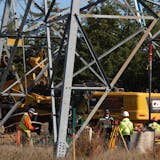Opinion editor's note: Star Tribune Opinion publishes a mix of national and local commentaries online and in print each day. To contribute, click here.
•••
In "Riders share history's burden" (Dec. 27) the Star Tribune reported about Dakota Indians riding to Mankato and gathering there on Dec. 26, the anniversary of the hanging of 38 Dakota in 1862. Gov. Tim Walz was in attendance, and he apologized to the Dakota for the hanging of the 38 and for the removal of Dakota from Minnesota.
But there is more to the story, as Walz, a former teacher, knows.
In 1862, the Dakota were unhappy and angry over their situation for a variety of reasons. By 1862, they had sold most of their land to the U.S. government. By mid-August, grievances came to a head among the Dakota, and some decided to wage war on settlers along the Minnesota River valley.
Early in the morning of Aug. 18, 1862, Dakota attacked the Lower Sioux Agency and then settlers who were living near them in Renville and Brown Counties. The Dakota's attacks that day were devastating, resulting in the killing of about 265 mostly unarmed men, women and children. Five Dakota warriors were killed. In the following days, the Dakota attacked Fort Ridgely twice and the town of New Ulm twice, but they were unable to take either place.
Ultimately, 650 whites were killed. Among them were 40 adult women and 100 children age 10 or under, including infants. Some were killed with great brutality, which particularly enraged the white population. In addition, the Dakota took about 150 white women and children captive, along with many mixed-bloods.
By the end of the conflict some 100 Dakota warriors were killed, but no Dakota women or children.


